ADT 2011 Annual Report Download - page 63
Download and view the complete annual report
Please find page 63 of the 2011 ADT annual report below. You can navigate through the pages in the report by either clicking on the pages listed below, or by using the keyword search tool below to find specific information within the annual report.-
 1
1 -
 2
2 -
 3
3 -
 4
4 -
 5
5 -
 6
6 -
 7
7 -
 8
8 -
 9
9 -
 10
10 -
 11
11 -
 12
12 -
 13
13 -
 14
14 -
 15
15 -
 16
16 -
 17
17 -
 18
18 -
 19
19 -
 20
20 -
 21
21 -
 22
22 -
 23
23 -
 24
24 -
 25
25 -
 26
26 -
 27
27 -
 28
28 -
 29
29 -
 30
30 -
 31
31 -
 32
32 -
 33
33 -
 34
34 -
 35
35 -
 36
36 -
 37
37 -
 38
38 -
 39
39 -
 40
40 -
 41
41 -
 42
42 -
 43
43 -
 44
44 -
 45
45 -
 46
46 -
 47
47 -
 48
48 -
 49
49 -
 50
50 -
 51
51 -
 52
52 -
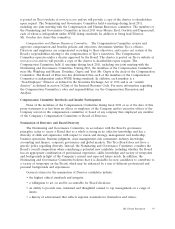 53
53 -
 54
54 -
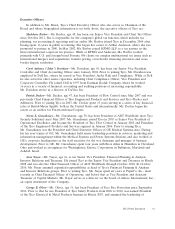 55
55 -
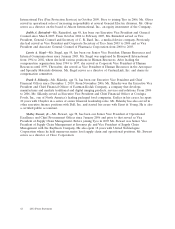 56
56 -
 57
57 -
 58
58 -
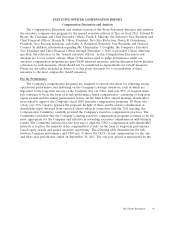 59
59 -
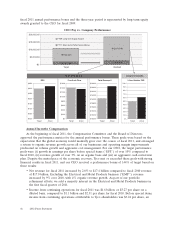 60
60 -
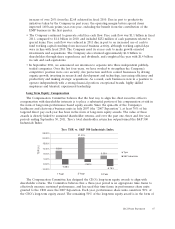 61
61 -
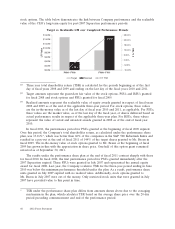 62
62 -
 63
63 -
 64
64 -
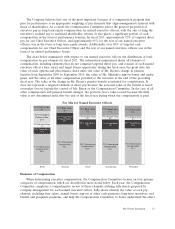 65
65 -
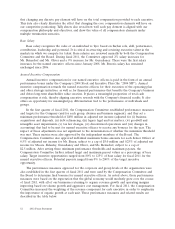 66
66 -
 67
67 -
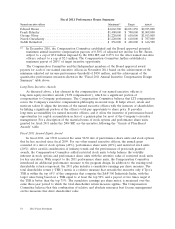 68
68 -
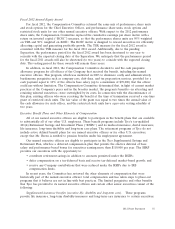 69
69 -
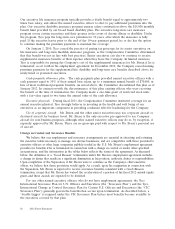 70
70 -
 71
71 -
 72
72 -
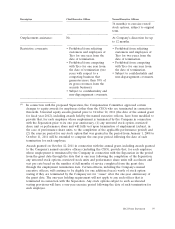 73
73 -
 74
74 -
 75
75 -
 76
76 -
 77
77 -
 78
78 -
 79
79 -
 80
80 -
 81
81 -
 82
82 -
 83
83 -
 84
84 -
 85
85 -
 86
86 -
 87
87 -
 88
88 -
 89
89 -
 90
90 -
 91
91 -
 92
92 -
 93
93 -
 94
94 -
 95
95 -
 96
96 -
 97
97 -
 98
98 -
 99
99 -
 100
100 -
 101
101 -
 102
102 -
 103
103 -
 104
104 -
 105
105 -
 106
106 -
 107
107 -
 108
108 -
 109
109 -
 110
110 -
 111
111 -
 112
112 -
 113
113 -
 114
114 -
 115
115 -
 116
116 -
 117
117 -
 118
118 -
 119
119 -
 120
120 -
 121
121 -
 122
122 -
 123
123 -
 124
124 -
 125
125 -
 126
126 -
 127
127 -
 128
128 -
 129
129 -
 130
130 -
 131
131 -
 132
132 -
 133
133 -
 134
134 -
 135
135 -
 136
136 -
 137
137 -
 138
138 -
 139
139 -
 140
140 -
 141
141 -
 142
142 -
 143
143 -
 144
144 -
 145
145 -
 146
146 -
 147
147 -
 148
148 -
 149
149 -
 150
150 -
 151
151 -
 152
152 -
 153
153 -
 154
154 -
 155
155 -
 156
156 -
 157
157 -
 158
158 -
 159
159 -
 160
160 -
 161
161 -
 162
162 -
 163
163 -
 164
164 -
 165
165 -
 166
166 -
 167
167 -
 168
168 -
 169
169 -
 170
170 -
 171
171 -
 172
172 -
 173
173 -
 174
174 -
 175
175 -
 176
176 -
 177
177 -
 178
178 -
 179
179 -
 180
180 -
 181
181 -
 182
182 -
 183
183 -
 184
184 -
 185
185 -
 186
186 -
 187
187 -
 188
188 -
 189
189 -
 190
190 -
 191
191 -
 192
192 -
 193
193 -
 194
194 -
 195
195 -
 196
196 -
 197
197 -
 198
198 -
 199
199 -
 200
200 -
 201
201 -
 202
202 -
 203
203 -
 204
204 -
 205
205 -
 206
206 -
 207
207 -
 208
208 -
 209
209 -
 210
210 -
 211
211 -
 212
212 -
 213
213 -
 214
214 -
 215
215 -
 216
216 -
 217
217 -
 218
218 -
 219
219 -
 220
220 -
 221
221 -
 222
222 -
 223
223 -
 224
224 -
 225
225 -
 226
226 -
 227
227 -
 228
228 -
 229
229 -
 230
230 -
 231
231 -
 232
232 -
 233
233 -
 234
234 -
 235
235 -
 236
236 -
 237
237 -
 238
238 -
 239
239 -
 240
240 -
 241
241 -
 242
242 -
 243
243 -
 244
244 -
 245
245 -
 246
246 -
 247
247 -
 248
248 -
 249
249 -
 250
250 -
 251
251 -
 252
252 -
 253
253 -
 254
254 -
 255
255 -
 256
256 -
 257
257 -
 258
258 -
 259
259 -
 260
260 -
 261
261 -
 262
262 -
 263
263 -
 264
264 -
 265
265 -
 266
266 -
 267
267 -
 268
268 -
 269
269 -
 270
270 -
 271
271 -
 272
272 -
 273
273 -
 274
274 -
 275
275 -
 276
276 -
 277
277 -
 278
278 -
 279
279 -
 280
280 -
 281
281 -
 282
282 -
 283
283 -
 284
284 -
 285
285 -
 286
286 -
 287
287 -
 288
288 -
 289
289 -
 290
290 -
 291
291 -
 292
292 -
 293
293 -
 294
294 -
 295
295 -
 296
296 -
 297
297 -
 298
298 -
 299
299 -
 300
300 -
 301
301 -
 302
302 -
 303
303 -
 304
304 -
 305
305 -
 306
306 -
 307
307 -
 308
308 -
 309
309 -
 310
310 -
 311
311 -
 312
312 -
 313
313
 |
 |

Compensation Governance
The Company’s executive compensation programs are based on the philosophy that they must:
(i) reinforce the Company’s business objectives and the creation of long-term shareholder value;
(ii) provide for performance-based reward opportunities that support growth and innovation without
encouraging or rewarding excessive risk; (iii) align the interests of executives and shareholders by
weighting a significant portion of compensation on sustained shareholder returns through long-term
performance programs; (iv) attract, retain and motivate key executives by providing competitive
compensation with an appropriate mix of fixed and variable compensation, short-term and long-term
incentives, and cash and equity based pay; and (v) recognize and support outstanding individual
performance and behaviors that demonstrate our core values—Integrity, Excellence, Teamwork and
Accountability. The Company recognizes that in order to execute on this philosophy, a strong
governance framework is required. Accordingly, the Company’s compensation programs are
characterized by the following compensation governance features:
• Variable compensation is heavily weighted on long-term incentives to align compensation with
sustained shareholder returns. In fiscal 2011, one hundred percent of long-term incentive awards
for our CEO were performance-based—consisting of stock options and performance share units.
• Incentive awards are contingent on achieving targets that are established and approved by the
Compensation Committee at the beginning of the applicable performance period. All awards are
assigned thresholds that define a minimum level of achievement before they pay out, and all
award payments are capped at 200% of target.
• The Compensation Committee is comprised solely of independent directors. The Committee’s
independent consultant, Exequity, provides no other services to the Company and has no prior
relationship with any of the named executive officers.
• The peer group of companies used to benchmark executive compensation levels is carefully
reviewed at least annually by the Compensation Committee with input from its independent
consultant. Changes to the peer group require Compensation Committee approval.
• The Compensation Committee annually completes a risk assessment of the Company’s executive
and broad-based compensation programs to evaluate whether they drive behaviors that are
within the risk management parameters it deems prudent.
• A ‘‘double-trigger’’ is required before severance benefits are paid or equity acceleration occurs
in connection with a change in control event (other than for the Chief Executive Officer).
Named executive officers are not entitled to excise tax gross-ups (other than the Chief Executive
Officer). For our Chief Executive Officer, the terms of the employment agreement that he
entered in 2002 govern in these scenarios.
• The Company eliminated tax gross-ups on supplemental benefits for all named executive officers
effective January 1, 2010. Effective December 2010, supplemental life, disability and long-term
care benefits have been discontinued for new executives. Effective January 2012, the Company’s
cash-allowance perquisite has been discontinued. In December 2011, executives formerly eligible
for this program received a one-time grant of restricted stock units in connection with the
discontinuance.
• Other than the Chief Executive Officer, the Company does not provide any pension plans for its
named executive officers.
• The Company maintains a robust share ownership and retention policy for both directors and
officers. Named executive officers are required to achieve and maintain minimum stock
ownership levels (two to ten times base salary). Directors are required to achieve and maintain
minimum stock ownership levels of five times the annual cash retainer.
2012 Proxy Statement 49
